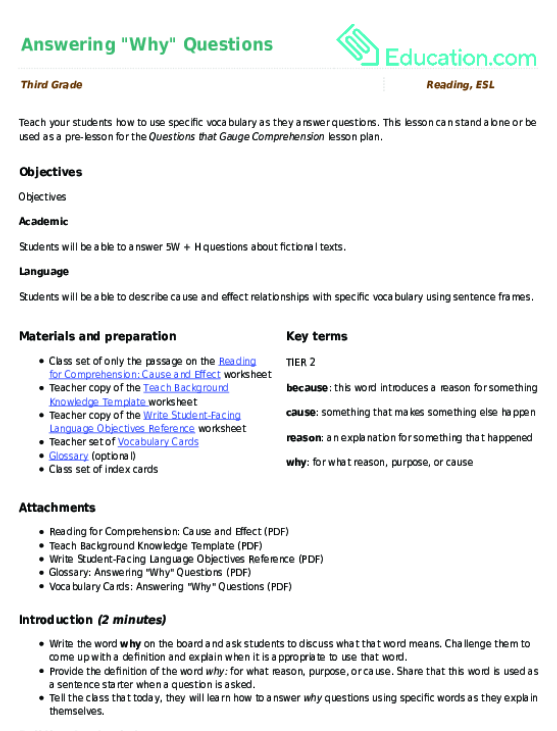Activity
Guidelines for Answering Multiple-Choice Questions
Does your teen get a) anxious over multiple-choice test questions, b) overwhelmed by the different options, c) confused by ambiguous wording, or d) all of the above? Multiple-choice test questions can be confusing. Here’s a toolbox of tricks and strategies to help your teen become a multiple-choice master.
What You Need:
- Your test
- Pencil
What You Do:
- It’s a good idea to read through the test before you begin to take it. When you read through the test, get a feel for the information that’s on the test, and for the amount of time you can afford to spend on any one part of the test.
- When you read through the test, pick out questions that you find “easy” - i.e. you are sure of the answer. Answer those first.
- Don’t be afraid to use the test as a source of information. Often, another question will help you answer the one you are stuck on.
- Choose answers that are longer and more descriptive. These answers stand out from the others. Take a look at this example. What is a thesaurus? a. Almanac b. Encyclopedia c. User Guide d. Volume giving a list of words with their synonyms, antonyms and related words *
- Look for a single pair of opposite answer options. The correct response is likely to be one of the two options in the pair, so ignore the other choices. What type of fertilizer mixture promotes quicker greening of grass? a. Higher proportion of nitrogen These two options are the pair of opposite answers b. Lower proportion of nitrogen c. Straight potassium sulfate d. Wood ashes and lime
- Look for clues to the correct answer in the question that is being asked. Which one of the following is a step in the scientific method? (Select one.) a. Use a step-by-step approach. b. The null hypothesis must be measurable. c. Create or state a hypothesis. d. Others must be able to reproduce the results. The clue is the word “step” appearing in the question. Only option (c) above actually describes a step. Additionally, the expression “step-by-step” in answer option (a) is misleading.
- Do not select answer options that are unrelated to the question being asked or are not plausible (possible). An inexperienced technician is assembling a computer and has encountered instructions for checking the jumper setting. What is a jumper? a. Power connection lead b. Young child’s coverall c. Very simple form of switch d. Link between memory slots Option answer (b) is unrelated either to the question or to the other answer choices. It is not plausible (possible).
- Look for collective (“None of the above,” “All of the above,” “both X and Y”) or non-specific (“It is impossible to tell”) answer options. Which of the following are warning signs of type one diabetes? a. Extreme fatigue b. Frequent urination c. Unusual weight loss d. All of the above * Although this guide focuses on examining multiple-choice science tests taking, skills learned can be applied to standardized tests given in all subjects.
Related learning resources

Multiple Choice Math: Division
Worksheet
Multiple Choice Math: Division
Students will practice their division skills with this third grade multiple choice worksheet.
3rd Grade
Worksheet

Glossary: Answering "Why" Questions
Worksheet
Glossary: Answering "Why" Questions
Use this glossary with the EL Support Lesson: Answering "Why" Questions.
3rd Grade
Worksheet

Multiple Choice Math: Subtraction
Worksheet
Multiple Choice Math: Subtraction
This third grade subtraction worksheet will challenge your child to complete the multiple choice problems.
3rd Grade
Math
Worksheet

Multiple Choice Math: Multiplication
Interactive Worksheet
Multiple Choice Math: Multiplication
To complete this third grade multiplication worksheet, your child will have to figure out which one of the multiple choice answers is the correct one.
3rd Grade
Math
Interactive Worksheet

Vocabulary Cards: Answering "Why" Questions
Worksheet
Vocabulary Cards: Answering "Why" Questions
Use these vocabulary cards with the EL Support Lesson Plan: Answering "Why" Questions.
3rd Grade
Worksheet

Answering "Why" Questions
Lesson plan
Answering "Why" Questions
Teach your students how to use specific vocabulary as they answer questions. This lesson can stand alone or be used as a pre-lesson for the Questions that Gauge Comprehension lesson plan.
3rd Grade
Lesson plan

Multiple Choice Math II: Addition and Subtraction
Worksheet
Multiple Choice Math II: Addition and Subtraction
This cute worksheet is jam-packed with addition and subtraction practice--multiple-choice style.
1st Grade
Worksheet

Asking and Answering Questions
Lesson plan
Asking and Answering Questions
This lesson helps students learn about asking and answering questions about a text. It also exposes them to valuable lessons about trying to figure out their dreams and not giving up along the way.
2nd Grade
Lesson plan

Glossary: Asking and Answering Questions While Reading
Worksheet
Glossary: Asking and Answering Questions While Reading
Use this glossary with the EL Support Lesson: Asking and Answering Questions While Reading.
3rd Grade
Worksheet

Asking and Answering Questions While Reading
Lesson plan
Asking and Answering Questions While Reading
Use this as a stand alone lesson or as a pre-lesson for the Asking and Answering Questions lesson.
3rd Grade
Lesson plan

Vocabulary Cards: Asking and Answering Questions While Reading
Worksheet
Vocabulary Cards: Asking and Answering Questions While Reading
Use these vocabulary cards with the EL Support Lesson: Asking and Answering Questions While Reading.
3rd Grade
Worksheet

Pumpkin Investigation Guidelines
Worksheet
Pumpkin Investigation Guidelines
Designed to accompany the Pumpkin Investigation activity, kids will use these pumpkin investigation guidelines to predict and record information about their own pumpkin, such as how much it weighs
Worksheet



